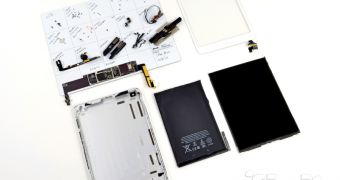The base iPad mini model with Wi-Fi-only connectivity and 16GB storage capacity retails for $329 in the US and €329 in the EU. And it costs Apple only $188 to manufacture one, according to a teardown analysis by IHS iSuppli.
During Apple’s Q4 earnings call last month, CFO Peter Oppenheimer said the iPad mini would generate gross margins that are “significantly below” the rest of Apple’s gadgets.
And considering Apple’s insane profit margins with products like the iPhone or the iPad, $188 / €146 is indeed a low point for the company.
According to All Things D, the price cited above is for the 16GB iPad mini with Wi-Fi. Apple spends an extra $90 / €70 for the 32GB version and another $162 / €126 per unit with the high-end model offering 64GB of storage.
Apple is using screens made by LG Display and AU Optronics, with All Things D noting that the entire display assembly sets the company back around $80 / €62. That’s roughly 43 percent of the total bill of materials (BOM).
IHS analyst Andrew Rassweiler says the display used in the iPad mini is based on a new technology that’s proving problematic, which is driving up the cost of the manufacturing, and Apple’s BOM implicitly.
However, “as kinks in the manufacturing process are worked out, those costs will come down,” All Things D has been told.
And, despite using a Samsung-manufactured A5 chip in the tablet, Apple is said to be pushing away from the Korean company’s services whenever it has a choice to source components from other suppliers.
This includes memory chips and displays, IHS says. The flash memory chips analyzed by IHS in their teardown were from Hynix Semiconductor. Japan’s Elpida supplied the RAM.
Cirrus Logic is the author of an audio chip found in the tablet, and STMicroelectronics makes the accelerometer that enables you to play racing games by tilting the device around.
Finally, Broadcom has been identified as the maker of a series of wireless chips housed inside a standalone wireless module crafted by Murata.

 14 DAY TRIAL //
14 DAY TRIAL //